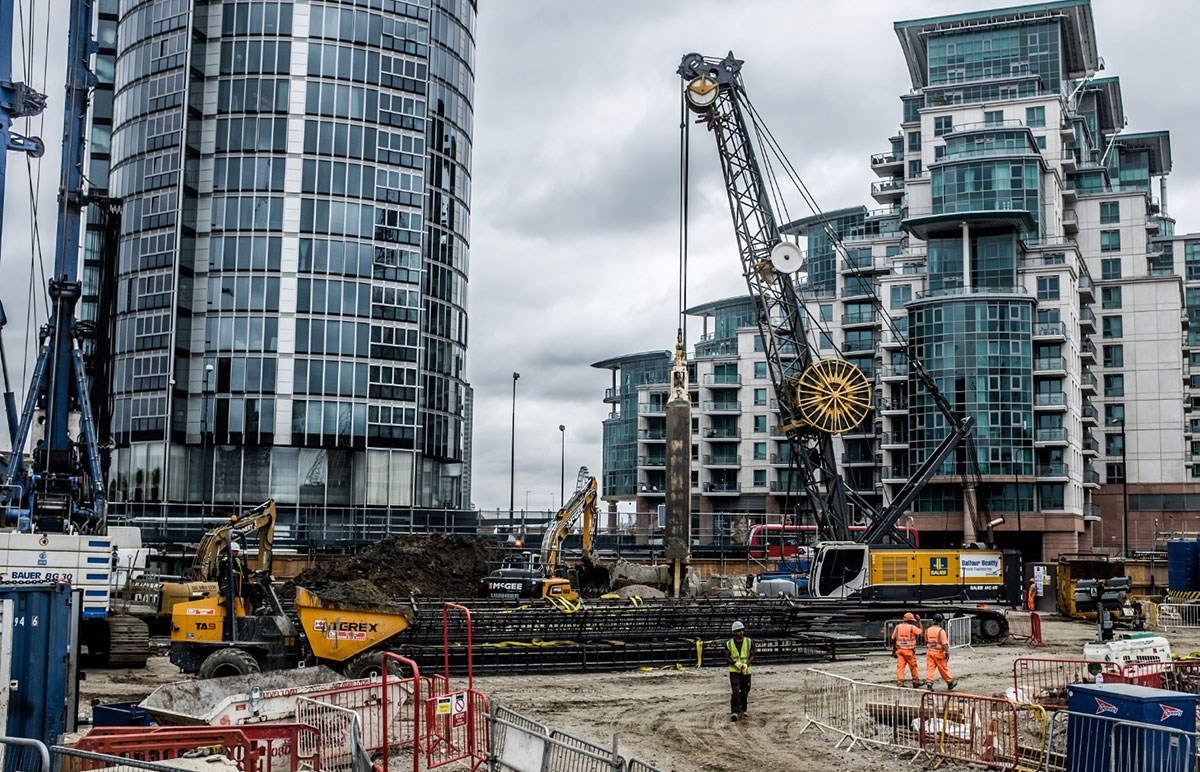8 Simple Techniques For Geotheta
8 Simple Techniques For Geotheta
Blog Article
Getting My Geotheta To Work
Table of ContentsWhat Does Geotheta Mean?Geotheta - The FactsGetting My Geotheta To WorkGeotheta for Beginners
They collaborate with civil designers, structural engineers, architects, and other specialists to incorporate geotechnical factors to consider into the total task layout and construction procedure. This requires reliable synergy, sychronisation, and interaction to ensure that the geotechnical facets align with the task goals and satisfy regulative demands.Mining & Materials Engineering: Principles of exploration, penetration prices, and aspects influencing the selection of drilling technique. Qualities of explosives, firing systems and blast patterns. Blowing up strategies in surface area and underground operations. Special blasting techniques at excavation boundaries. Resonance and sound control. Mechanical and continual strategies to fragmentation, consisting of longwall shearing and fullface boring.
Modelling of piece and bit dimension circulations; comminution as a transfer function. Comminution modern technology: crushing, grinding, size category. Integrated analysis of fragmentation and comminution procedures. Offered by: Mining & Materials Design.
The smart Trick of Geotheta That Nobody is Discussing
Bachelor's degree programs in civil, geotechnical, geological, and environmental engineering commonly last four years and include basic education courses in English, social science, and the liberal arts, along with training courses in sophisticated maths, architectural geology, and liquid mineralogy. (https://soundcloud.com/geotheta)
Geotechnical design includes the analysis of the soil and rock conditions at a certain website, and their ramifications for the growth of that website. As many frameworks count on the ground for support, it is without shock that an in-depth understanding of the ground problems, and the suitability of foundation systems, are crucial to the lasting security and performance of the building or framework.
Being experts in the investigation of geological developments and ground behaviour, geotechnical designers do clinical investigations and testing to comprehend the effect these geological formations may have on the design and building of structure, civil and facilities tasks. This know-how is critical for the design and construction of structures, roads, tunnels, dams, bridges, and water supply and sewage systems.
The geotechnical team at Douglas Partners routinely speak with designers, style designers, programmers, and home builders to make suggestions on design and development propositions to ensure that the built frameworks are appropriately developed for the ground problems. For instance, the design of footing systems needs to think about the weight of the framework, the ability of the ground to sustain that weight along with activity tolerances and efficient building.
Geotheta - Truths
This task is considerably simplified by the usage of our Douglas Map geospatial system that makes this details conveniently available in an easy to make use of web internet browser interface. A geotechnical designer will direct the boring of boreholes and examination pits to accumulate dirt and other examples, and also analyze surface attributes and ground exposures to develop a geotechnical version of the subsurface problems.
Depending upon the job kind and ground conditions experienced, laboratory screening might amongst other points examine toughness, compressibility, reactivity and/or permeability of soil and rock samples. After this data is gathered and looked at, the outcomes are utilized for a geotechnical design of the site, which is typically provided as areas across the site.

A geotechnical investigation naturally can just assess the ground problems at the places drilled or excavated. Natural variations in dirt and rock problems can happen across a website and between test locations. It is consequently great practice that the geotechnical engineer be maintained throughout construction of the project to offer on-site verification that the ground conditions experienced follow the assumptions and suggestions supplied in the geotechnical investigation record.
Rumored Buzz on Geotheta
Geotechnical designers use their comprehensive understanding of soil and rock to examine danger and resolve problems on varied facilities projectsGeotechnical design is a specialist branch of civil engineering which takes a look at the behaviour of earth products and the application of soil and rock auto mechanics. Consulting Engineers. As a geotechnical designer, you will certainly examine the physical, mechanical and chemical homes of dirt and rock in order to develop foundations, maintaining structures and earthworks
Geotechnical engineering is carefully connected to and overlaps with, both design geology and ground engineering - https://www.avitop.com/cs/members/geotheta.aspx. It's feasible to be experts in geotechnics or benefit a geotechnical firm but be recognized as a design geologist or a ground engineer. As a geotechnical designer, you'll need to: build and keep relationships with customers and various other experts involved in the website, throughout each projectmaintain security standards on site be mindful of price implications when you make recommendationsstudy geological maps and aerial photos from a variety of resources and from various time periodsexamine building intends to see just how possible they are based upon your understanding of the siteinvestigate risks or geological risks for the sitesearch for ecologically sensitive attributes, such as garbage dump beginning to establish factual and expository ground modelsplan field investigationsdrill and evaluate samples of bedrock, dirt, groundwater and extra materials monitor various other professionals on sitesolve technical issues as they arise, such as unanticipated structures at drill sitesmonitor problems throughout and after building and construction to make sure frameworks are steady in the brief and lengthy termadding information gathered on website to your preliminary researchcreating geotechnical calculations, drawings, and 2 or three-dimensional computer designs analyzing the datamaking recommendations concerning the proposed use of the site

Report this page